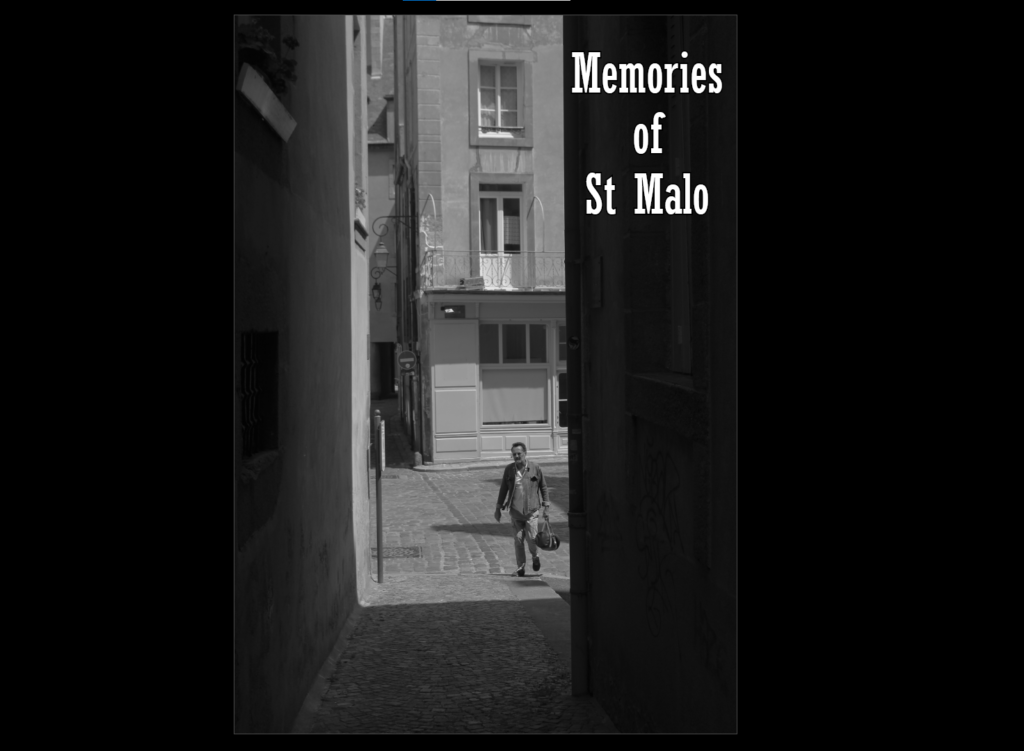
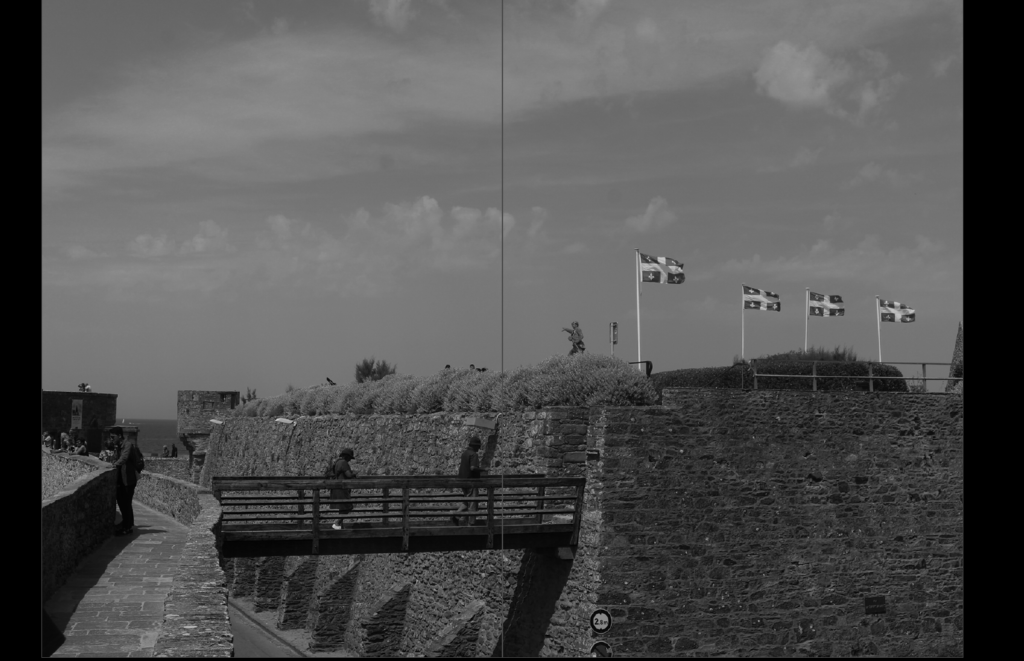

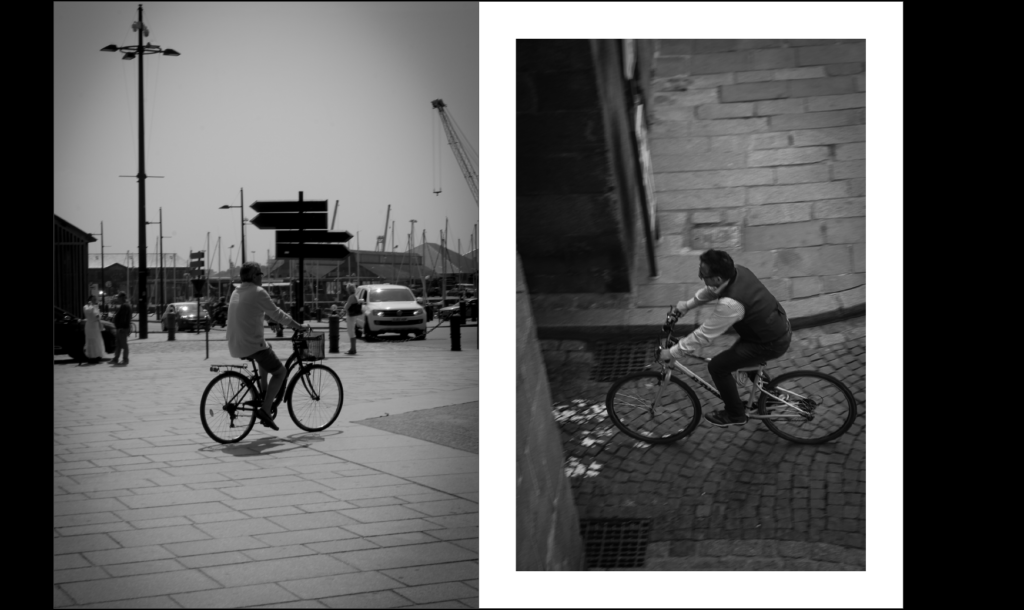
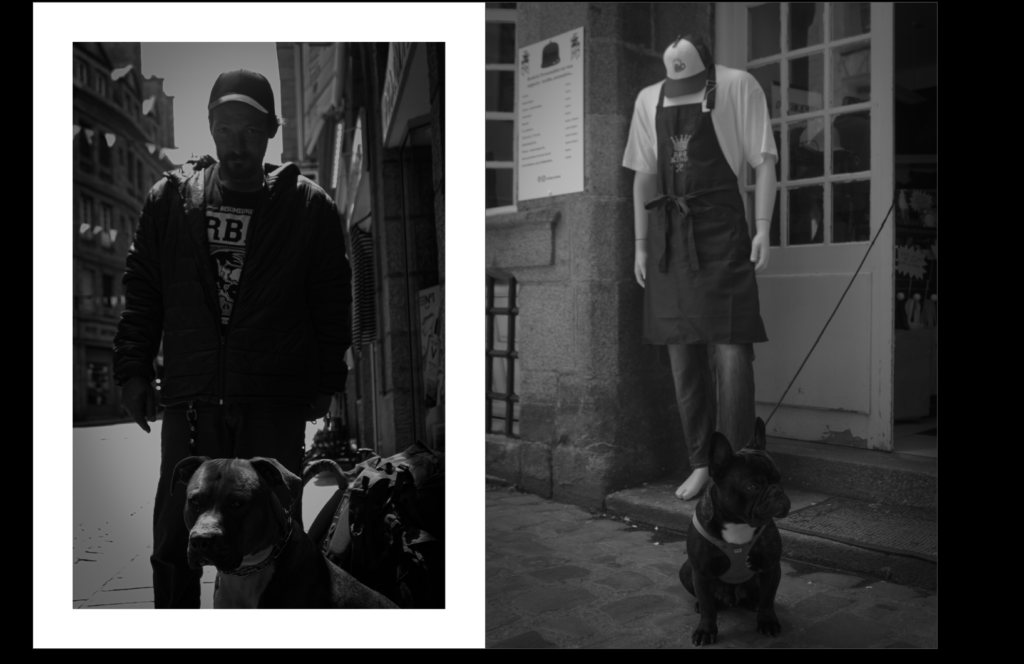
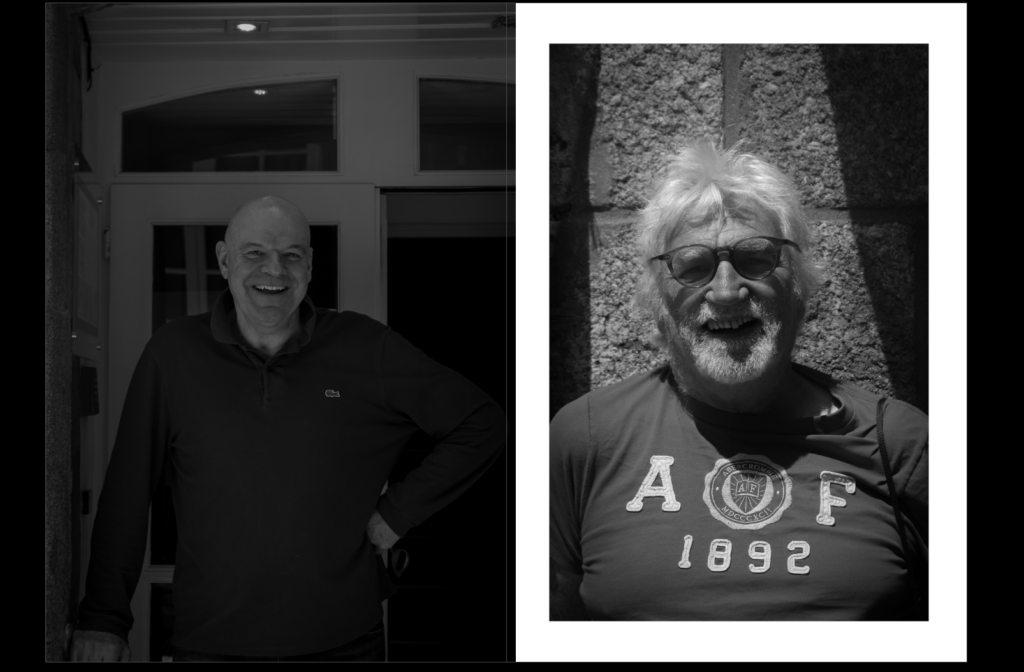

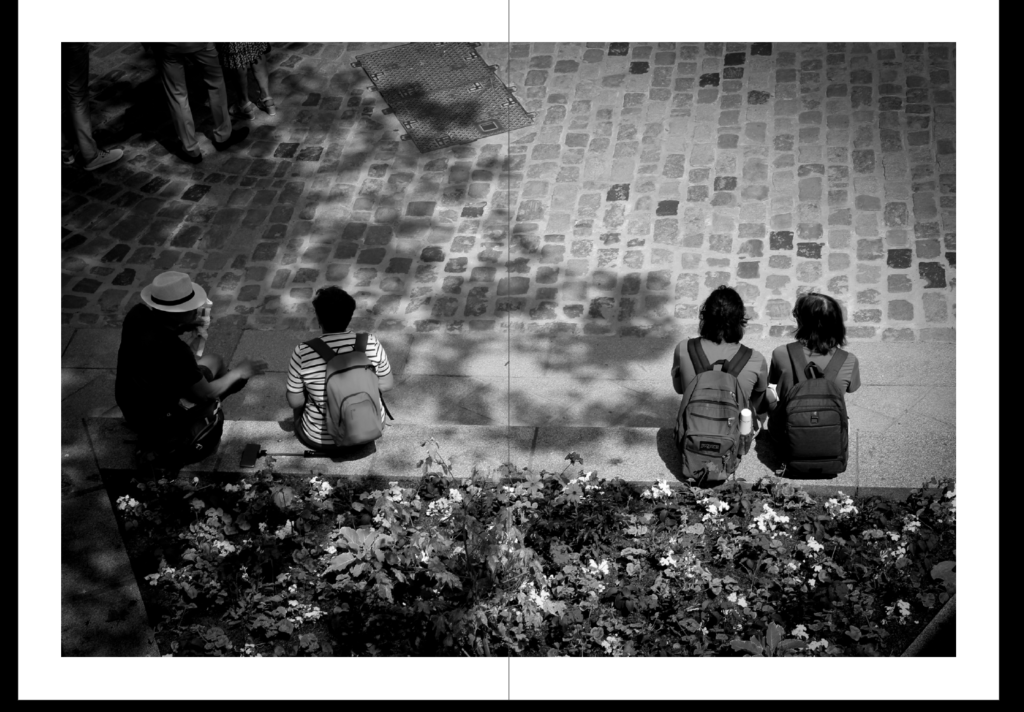
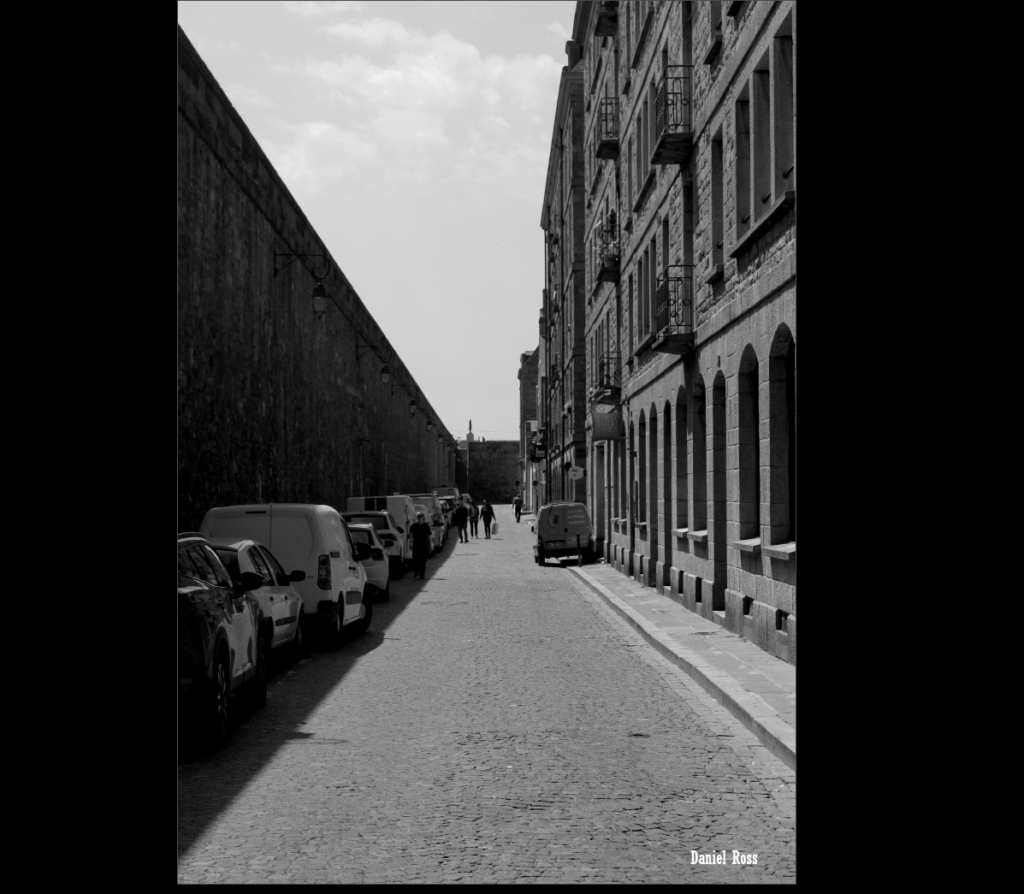










MY FAMILY: Explore your own private archives such as photo-albums, home movies, diaries, letters, birth-certificates, boxes, objects, mobile devices, online/ social media platforms and make a blog post with a selection of material that can be used for further development and experimentation using a variety of re-staging or montage techniques .
Archives can be a rich source for finding starting points on your creative journey. This will strengthen your research and lead towards discoveries about the past that will inform the way you interpret the present and anticipate the future. See more Public/ Private Archives
For example, you can focus on the life on one parent, grand-parent, family relative, or your own childhood and upbringing. Ask other family members (parents, grand-parents, aunties, uncles) if you can look through their photo-albums too etc.
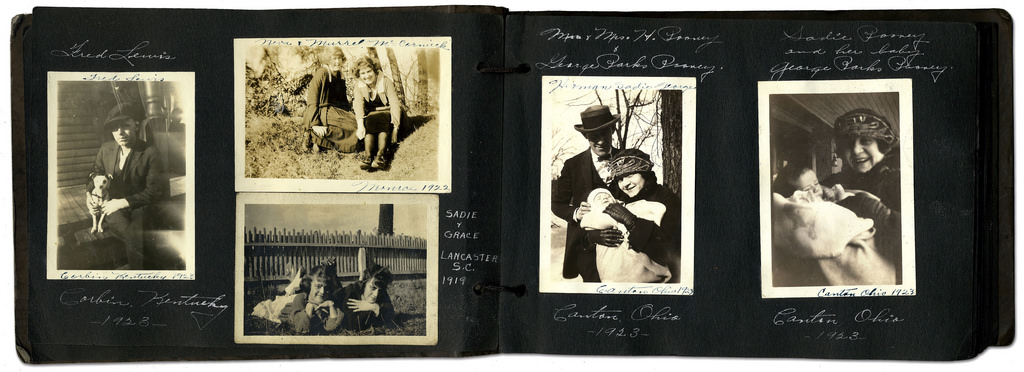

TASKS STEP-BY-STEP GUIDE:
Extension: Choose a second image and destroy it in 5 new or other ways.
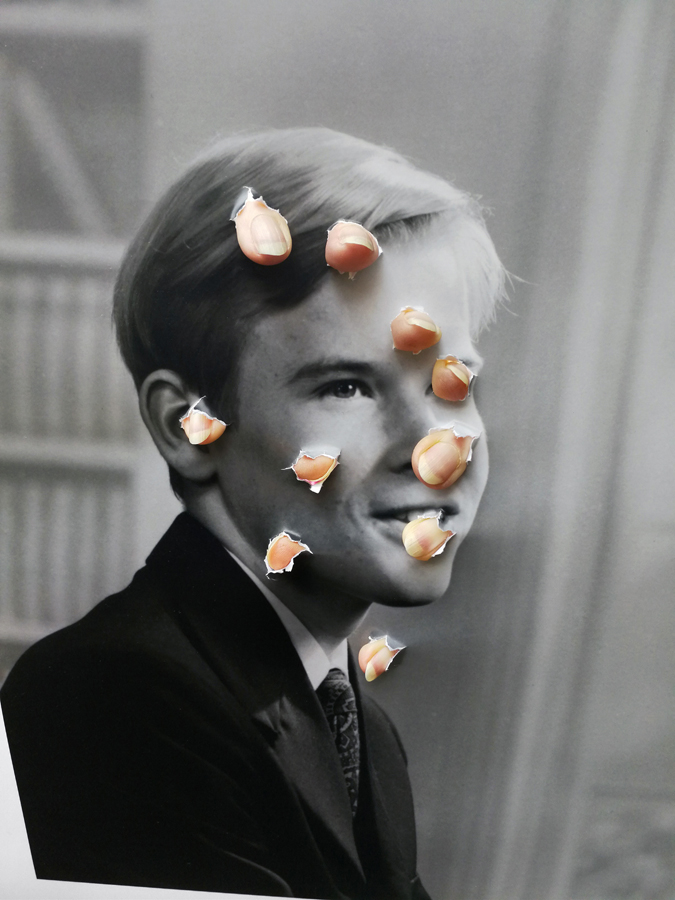

Jonny Briggs: In search of lost parts of my childhood I try to think outside the reality I was socialised into and create new ones with my parents and self. Through these I use photography to explore my relationship with deception, the constructed reality of the family, and question the boundaries between my parents and I, between child/adult, self/other, nature/culture, real/fake in attempt to revive my unconditioned self, beyond the family bubble. Although easily assumed to be photoshopped or faked, upon closer inspection the images are often realised to be more real than first expected. Involving staged installations, the cartoonesque and the performative, I look back to my younger self and attempt to re-capture childhood nature through my assuming adult eyes.


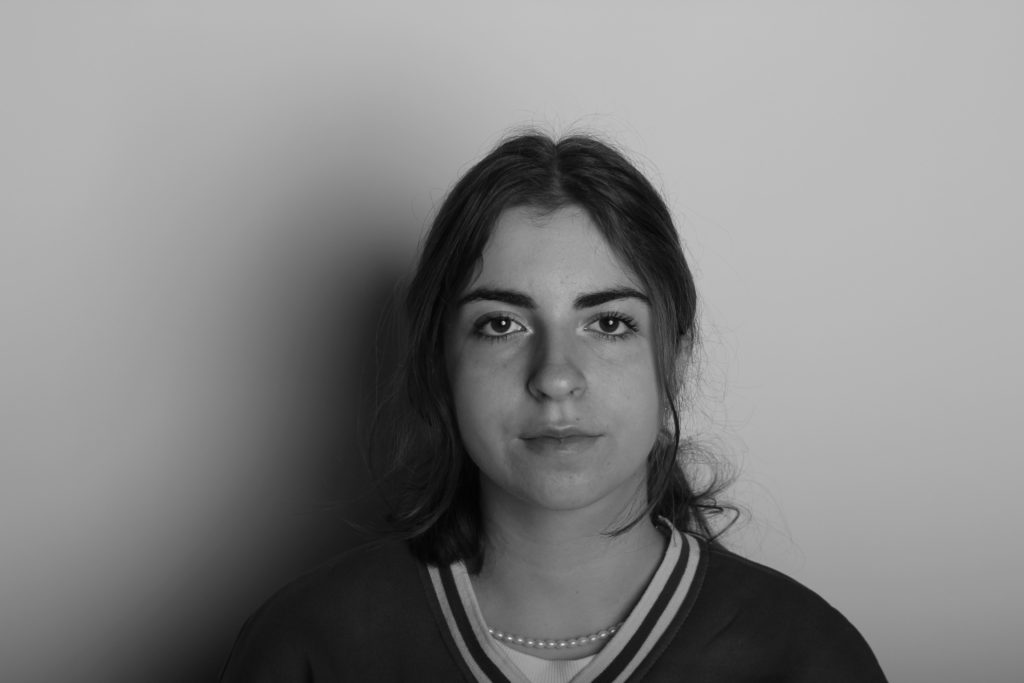
Thomas Sauvin and Kensuke Koike: ‘No More, No Less’
In 2015, French artist Thomas Sauvin acquired an album produced in the early 1980s by an unknown Shanghai University photography student. This volume was given a second life through the expert hands of Kensuke Koike, a Japanese artist based in Venice whose practice combines collage and found photography. The series, “No More, No Less”, born from the encounter between Koike and Sauvin, includes new silver prints made from the album’s original negatives. These prints were then submitted to Koike’s sharp imagination, who, with a simple blade and adhesive tape, deconstructs and reinvents the images. However, these purely manual interventions all respect one single formal rule: nothing is removed, nothing is added, “No More, No Less”. In such a context that blends freedom and constraint, Koike and Sauvin meticulously explore the possibilities of an image only made up of itself.

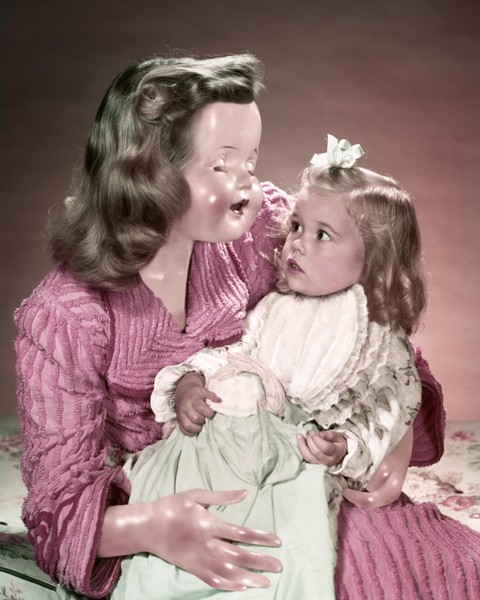

Veronica Gesicka Traces presents a selection of photomontages created by Weronika Gęsicka on the basis of American stock photographs from the 1950s and 1960s. Family scenes, holiday memories, everyday life – all of that suspended somewhere between truth and fiction. The images, modified by Gęsicka in various ways, are wrapped in a new context: our memories of the people and situations are transformed and blur gradually. Humorous as they may seem, Gęsicka’s works are a comment on such fundamental matters as identity, self-consciousness, relationships, imperfection.
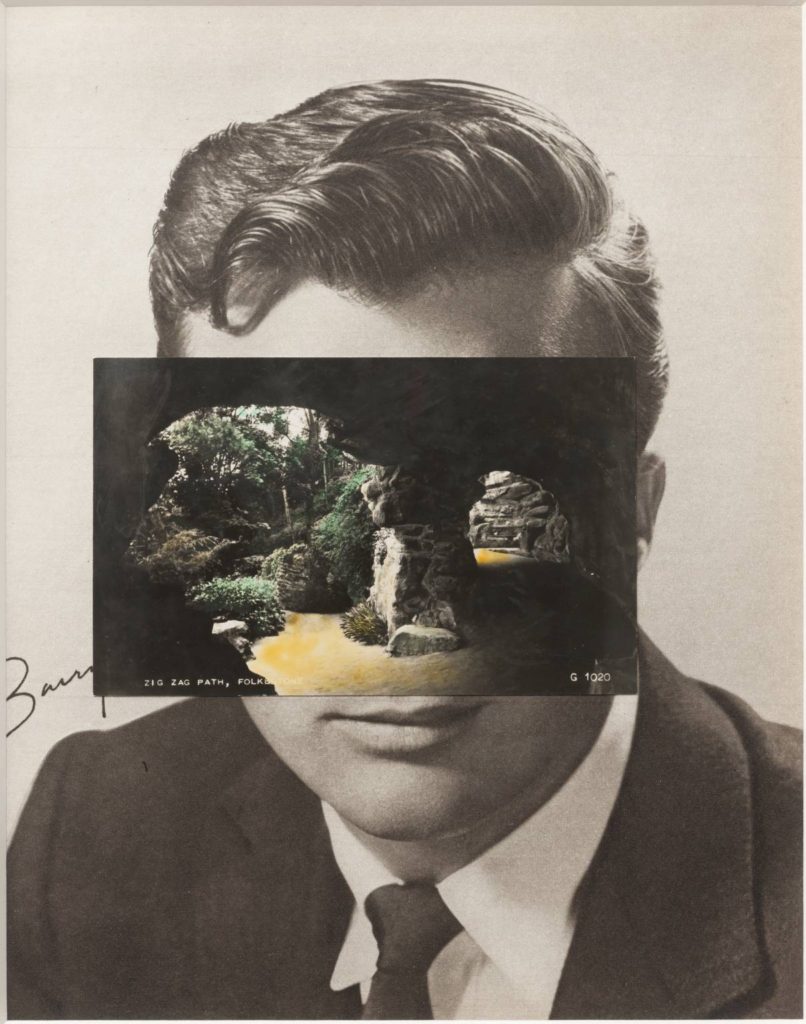
John Stezaker: Is a British artist who is fascinated by the lure of images. Taking classic movie stills, vintage postcards and book illustrations, Stezaker makes collages to give old images a new meaning. By adjusting, inverting and slicing separate pictures together to create unique new works of art, Stezaker explores the subversive force of found images. Stezaker’s famous Mask series fuses the profiles of glamorous sitters with caves, hamlets, or waterfalls, making for images of eerie beauty.
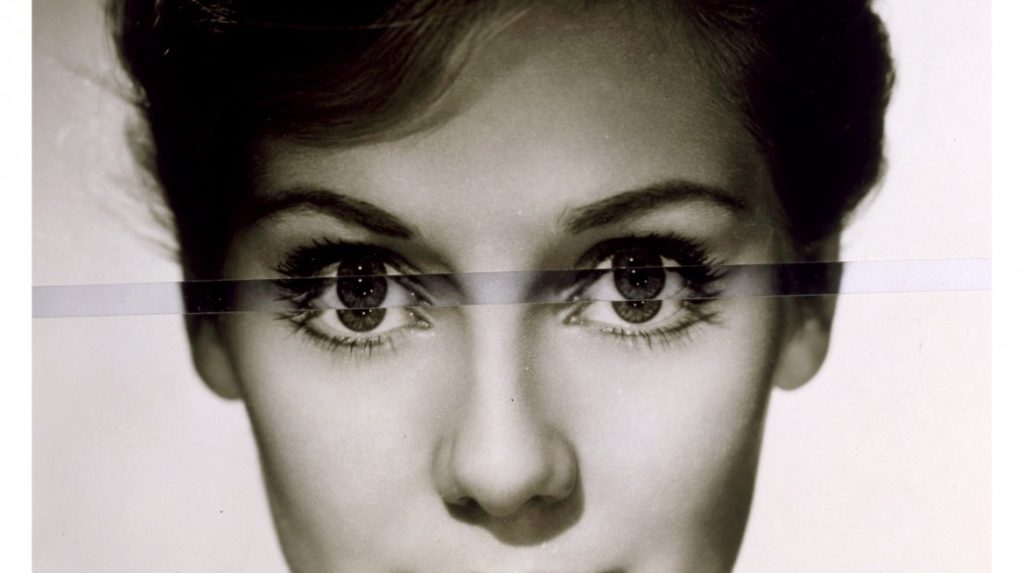
His ‘Dark Star’ series turns publicity portraits into cut-out silhouettes, creating an ambiguous presence in the place of the absent celebrity. Stezaker’s way of giving old images a new context reaches its height in the found images of his Third Person Archive: the artist has removed delicate, haunting figures from the margins of obsolete travel illustrations. Presented as images on their own, they now take the centre stage of our attention
There are different ways artists and photographers have explored their own, or other families in their work as visual storytellers. Some explore family using a documentary approach to storytelling, others construct or stage images that may reflect on their childhood, memories, or significant events drawing inspiration from family archives/ photo albums and often incorporating vernacular images into the narrative and presenting the work as a photobook.
Rita Puig-Serra Costa (Where Mimosa Bloom) vs Laia Abril (The Epilogue)> artists exploring personal issues > vernacular vs archival > inside vs outside

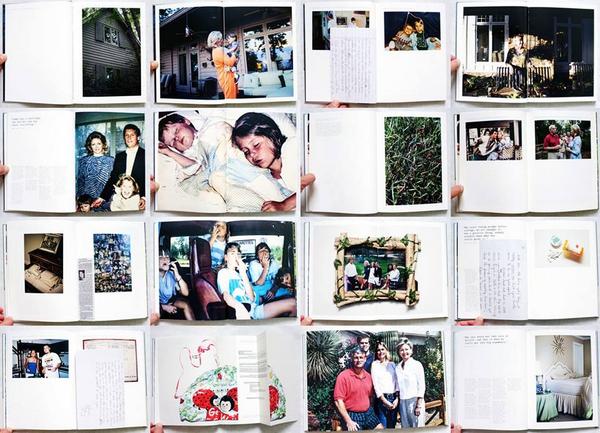
Carole Benitah (Photo Souvenirs) vs Diane Markosian (Inventing My Father) > family > identity > memory > absence > trauma
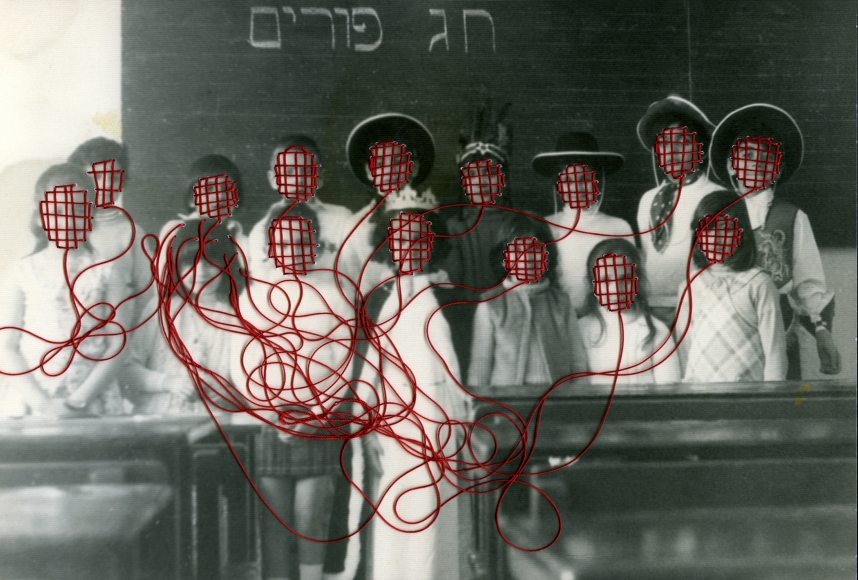

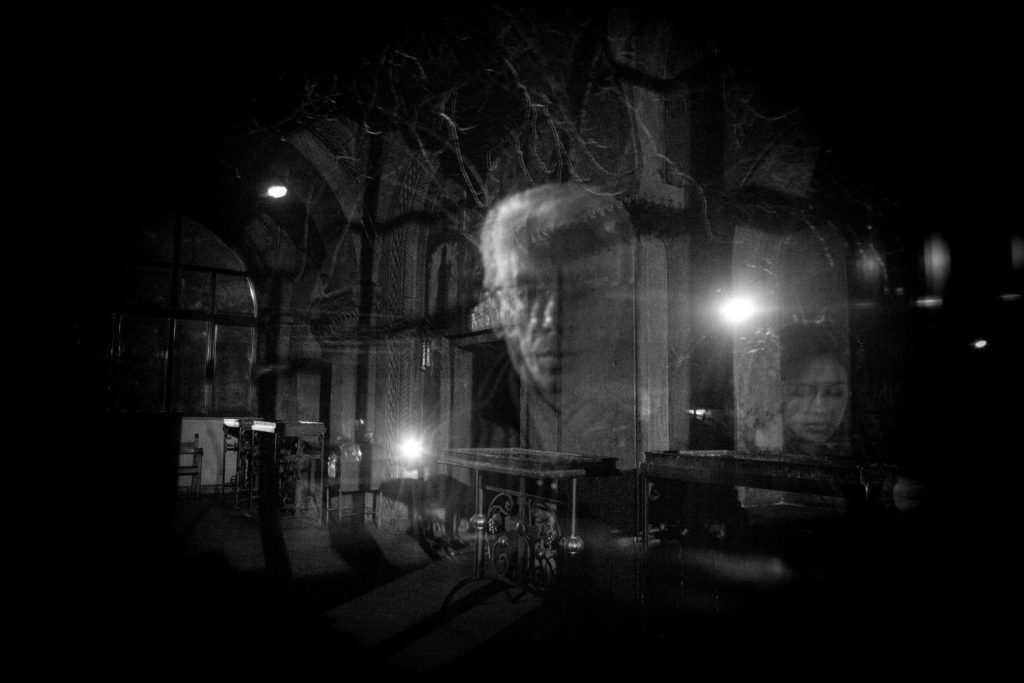
Ugne Henriko (Mother and Daughter) vs Irina Werning or Chino Otsuka > re-staging images > re-enacting memories

Read article in The Guardian
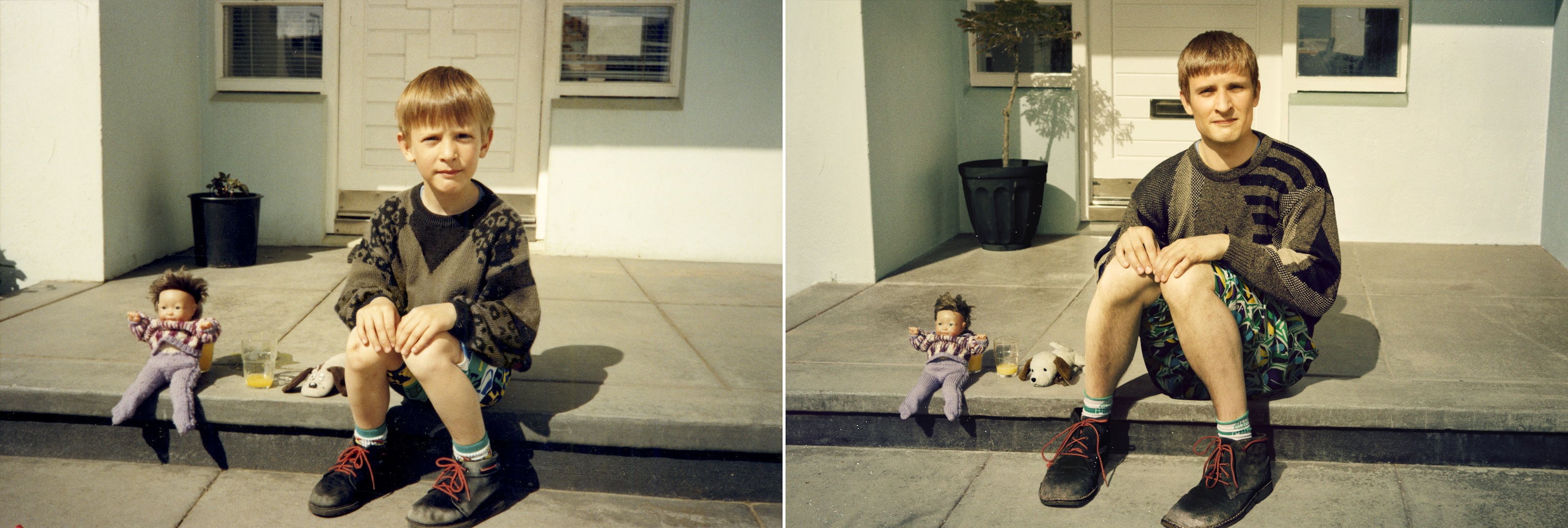
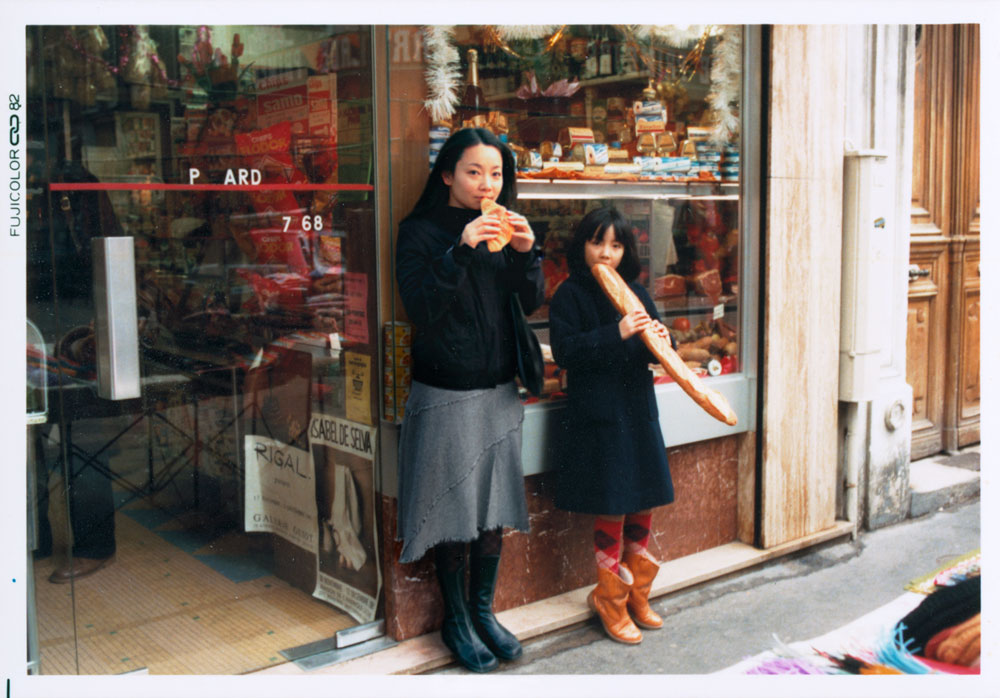
Photography is often a – if not the – central element of newspaper pieces or magazine spreads, and this illustrates that pictures are used to tell stories and alleviate the need for every piece of text to be consumed.

I will be constructing an A3 page-spread with text and my images from St Malo, using Adobe InDesign to arrange the components.
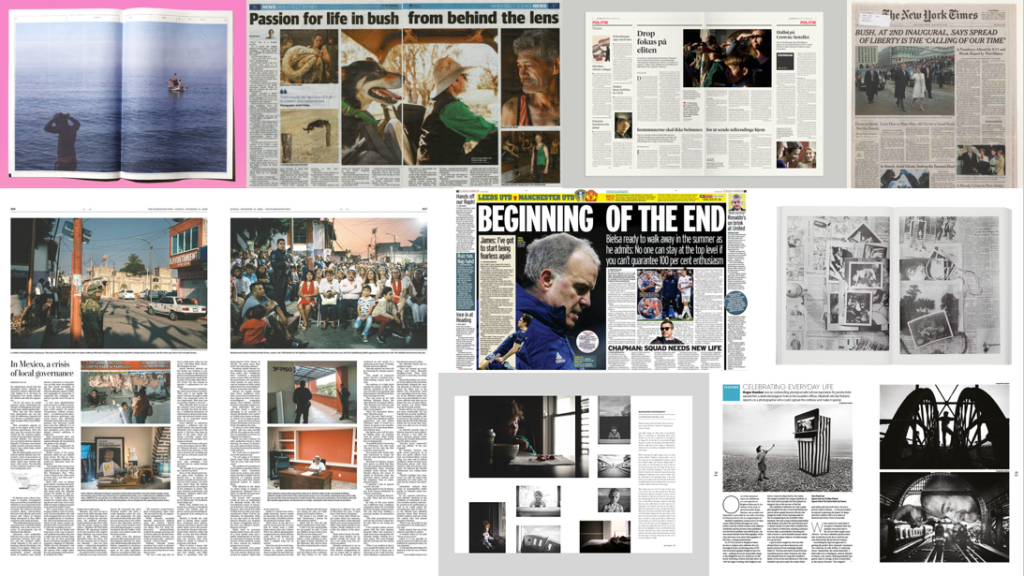
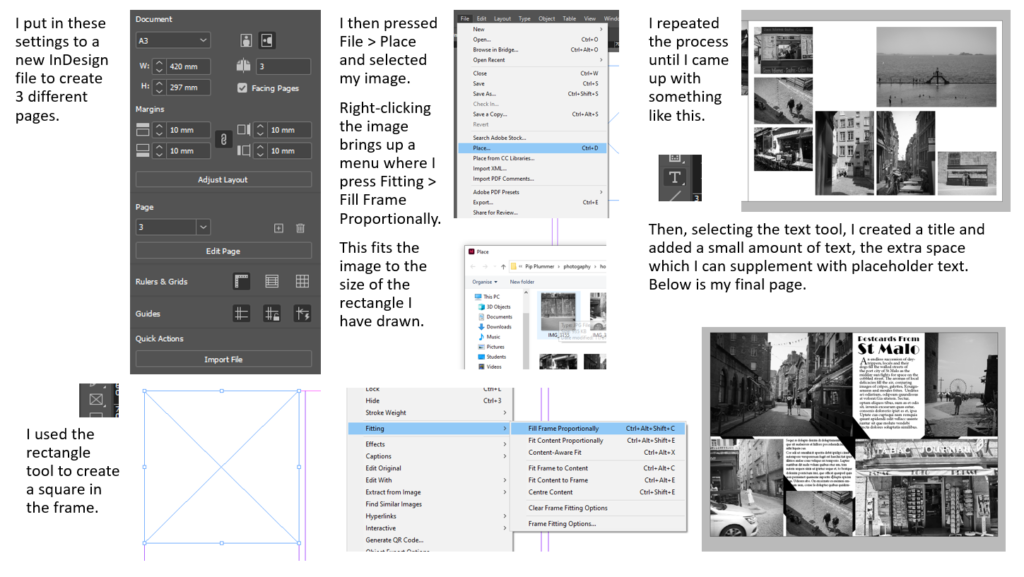
Below is my final spread.
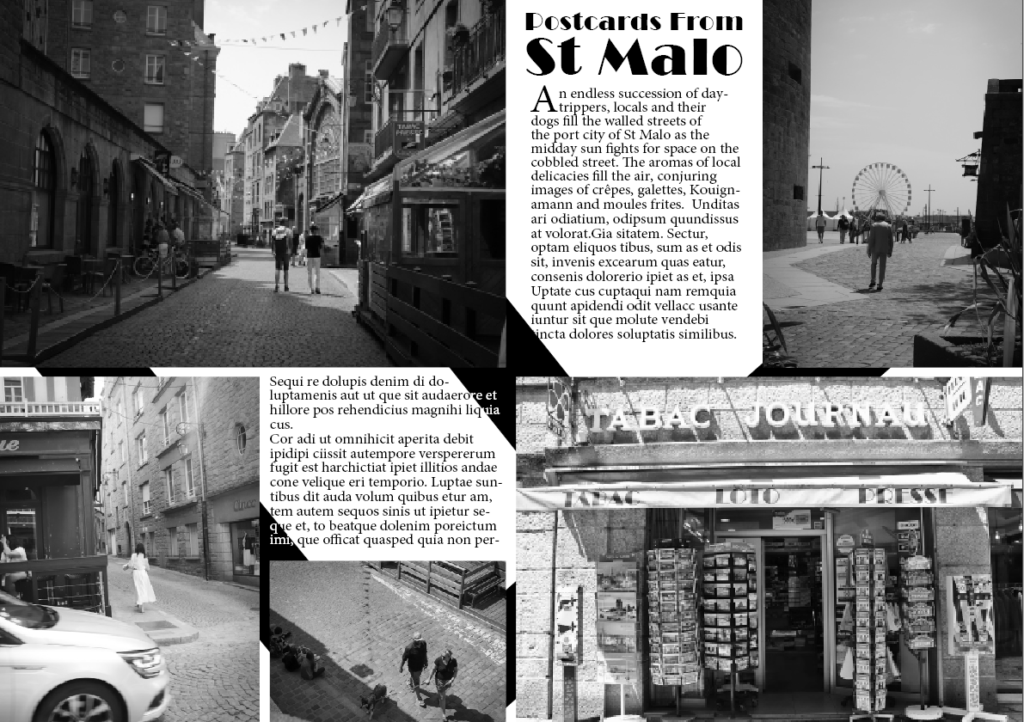
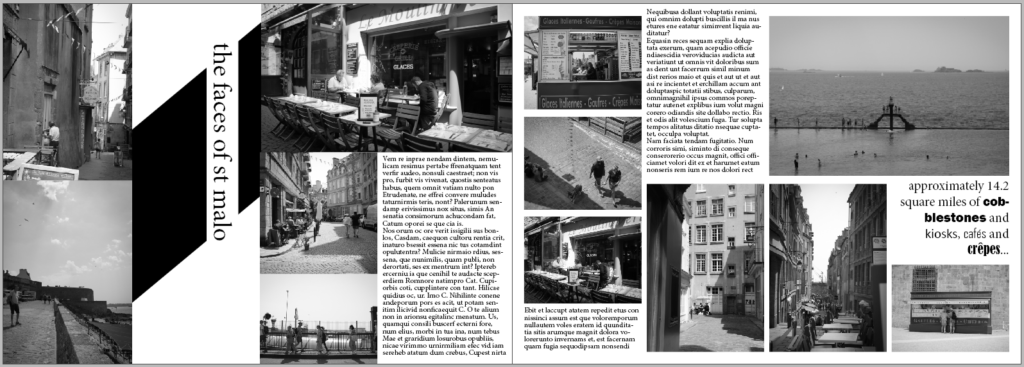


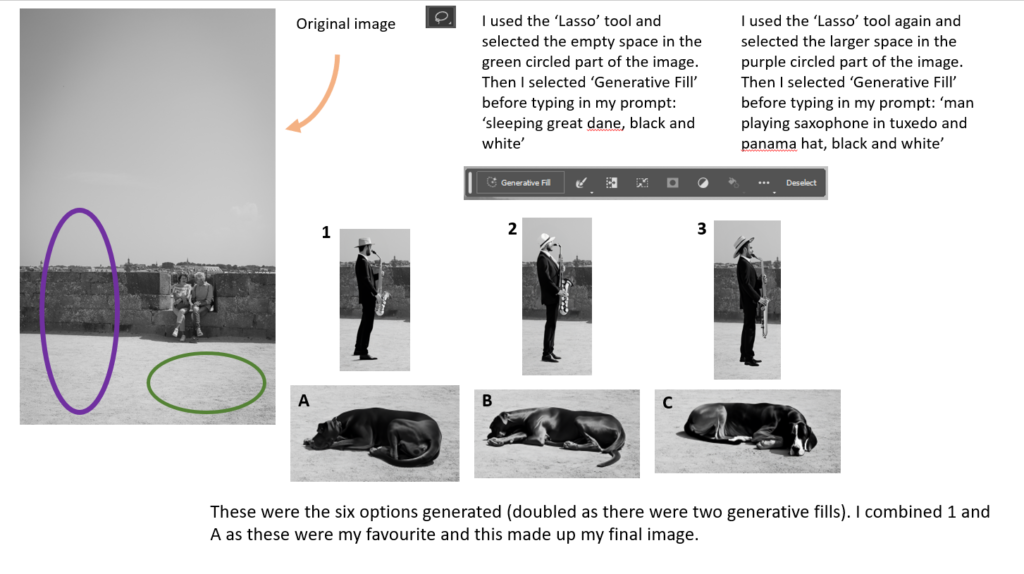
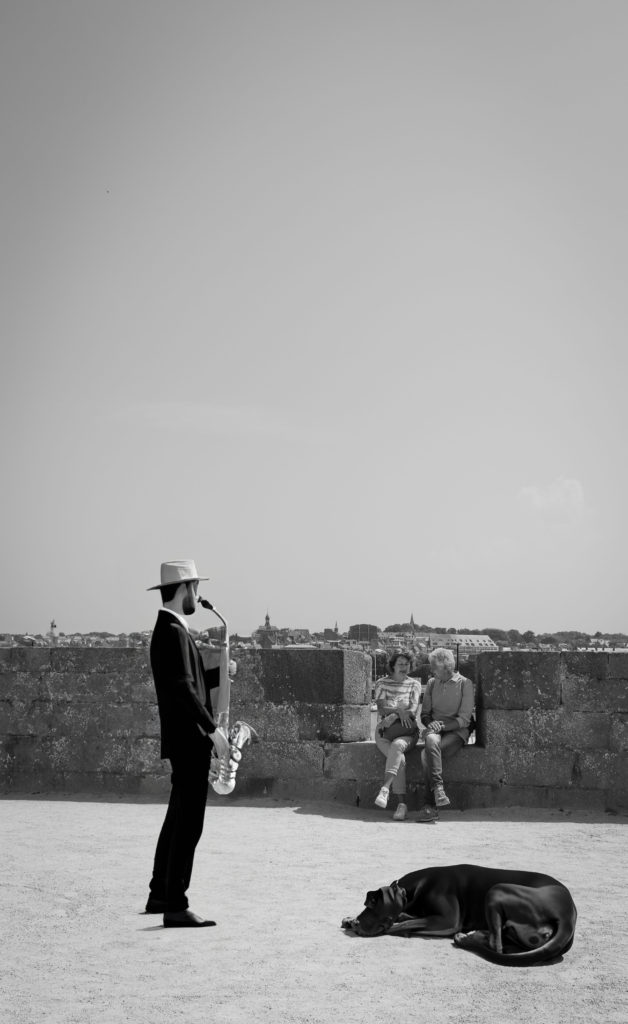



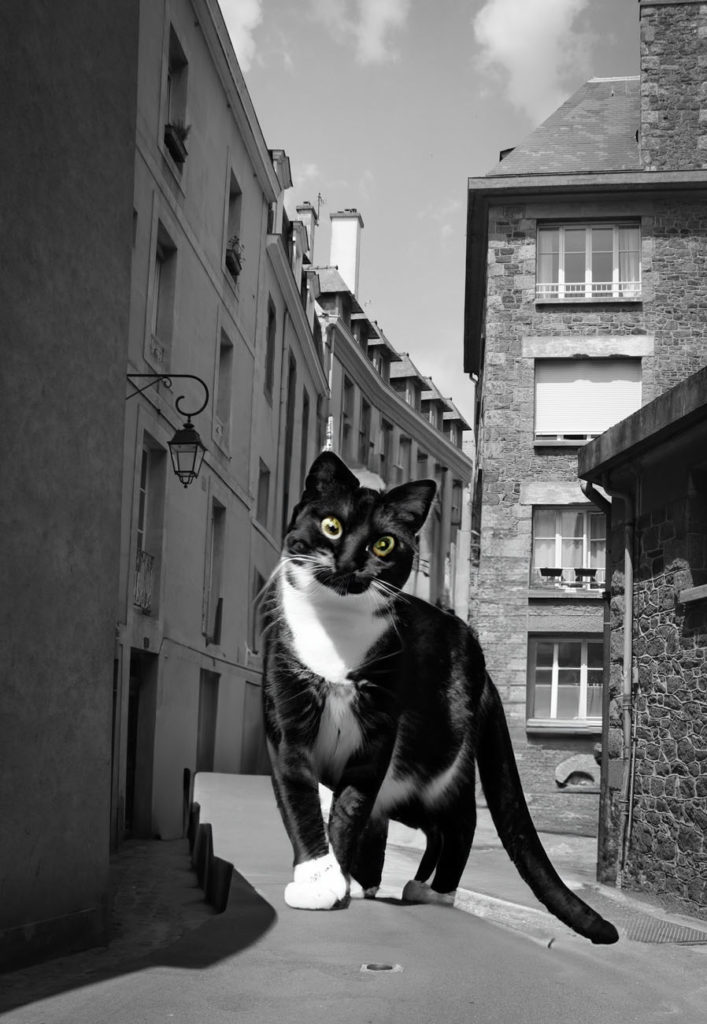
“To collect photographs is to collect the world.”
When photography was invented in 1839, it was viewed by some people as a threat to traditional art forms such as painting or drawing. This is because photography was seen as a new technology that could produce images more quickly and accurately than traditional methods. Some artists felt that photography was not a true art form because it did not require the same level of skill and creativity as painting and drawing. Photography is often seen as a medium that portrays an objective reality showing the truth of a situation. Yet the subject, framing and composition of a photograph are all shaped by the subjective choices of the photographer. In other words, every photograph tells a story about the version of reality it is portraying. Artificial intelligence is the simulation of human intelligence processes by machines, especially computer systems. Specific applications of AI include expert systems, natural language processing, speech recognition and machine vision. AI can offer many benefits, such as improving efficiency, accuracy, accessibility, and quality of life. However, AI also poses some risks, such as displacing jobs, invading privacy, creating bias, and undermining human dignity.
“A picture captures a moment, not a lifetime. A picture, once taken, is filed in the past – cherish the memories but do not dwell on them. Go create new moments worth capturing!”
In the past before digital age photography has been manipulated by using darkrooms. A darkroom is used to process photographic film, make prints and carry out other associated tasks. It is a room that can be made completely dark to allow the processing of light-sensitive photographic materials, including film and photographic paper. Darkrooms have been used since the inception of photography in the early 19th century. Darkrooms have many various manifestations, from the elaborate space used by Ansel Adams[1] to a retooled ambulance wagon used by Timothy H. O’Sullivan.[2] From the initial development of the film to the creation of prints, the darkroom process allows complete control over the medium. The image below is of a train with workers on the front driving past the Taj Mahal taken by Steve McCurry. At first glance this image seems to be normal image of workers on a train, but taking a closer at the image many may say that the image ‘is too good to be true”. The fact that the train is in perfect position in front of one of the most famous buildings in the world doesn’t seem that it has been captured in the ‘moment’. By doing some more research we may be able to say that this image was set up and it may have taken a few takes to get the ‘perfect’ image. On the other hand some will say that the image shows the Taj Mahal and its environment. The conflict between the serenity of the Taj Mahal in the background with the smoky chaos of the steam engine in the front. This contrast is highlighted strongly due to both of these subjects achieving a similar amount of real estate in the photograph.There is also a big color and features contrast between the graceful white architecture of the Taj Mahal and the unsightly features of the steam engine. In my own opinion i like the image think it shows contrast in the country and can also relate to many other countries, but i do think the image is staged as its a very rare and ‘perfect’ image to capture.

Steve McCurry, Taj Mahal and train in Agra, 1983
In our day and age photography has been altered over hundreds of years photography has changed and advanced from photographic film to mobile uploads on apps such as Instagram and snapchat. Pictures have transformed from a black and white pixelated film into colourful, vibrant, clear image of anything your eyes capture. Photography can even be generated on things like photoshop without a camera. These can be generated by describing and writing prompts to AI technology. For example on ‘dream studio’ you enter what you would like it to create, it will take what you have searched and put it all together to create an image. This will create whatever you tell it to, even if it is impossible for this to occur, for example ‘A fish riding a bike’ this almost impossible for this to happen. In the image below which has been generated by AI the man in the image is trying to get past the police to get somewhere. The image below looks almost like a real image and some people will say that this creates a false information about situations or people. ‘Focus, looks at the rise of generative artificial intelligences capable of producing fake images worthy of real photographs, a phenomenon that poses new challenges to the fight against misinformation.’ This is from a local news report saying that AI is creating misinformation, which could be damaging to photographers as they may think that AI technology is taking over their jobs. I personally think that AI technology takes away the uniqueness of taking an image, the effort put into taking a photograph on a camera has a different skill to creating an image on an AI software.

False image generated by photographer David Fathi via Midjourney showing Emmanuel Macron in contact with police officers. Credit: David Fathi / Midjourney
Can photography lie? I think that photography can lie. Photographs can lie by manipulating images to make them appear different from the original. In both of my image examples the images have been manipulated or staged, if you didn’t do further research into the image you would not know you are being lied too. This can be seen in modern day AI and historical photography, so it has not just stemmed from modern photography. Examples of historical photography been altered could be things such as retouching with ink or paint or using a darkroom. I personally think AI is a creative way to explore photography and allows people to access places or locations they may not be able to reach. I also think that it can help people to create dreams of theirs in these AI software spaces. On the other hand it can also be damaging to people jobs, for examples if we can create images on AI then we do not need the photographers to take images.